HOME GROWN GRAIN & GRAIN-ISH
Popcorn & Chestnuts, Bigger is Better But Not Always
Orville Redenbacker’s popcorn may be an “exclusive kernel hybrid that pops up lighter and fluffier than ordinary popcorn,” but my popcorn — nonhybrids whose seeds I’ve saved for many years — tastes better. I grow two varieties, Pink Pearl and Pennsylvania Dutch Butter Flavored Popcorn.
This winter my popcorns’ poppability was especially poor, probably because of the weather. Really! Popcorn pops when the small amount of water within each kernel, heated above the boiling point, builds up enough pressure to explode the kernel, turning it inside out. For good popping, a kernel needs an intact hull and moisture within. Not just any amount of moisture, though, but as close as possible to 13.5%.
(Other whole grains, such as wheat berries and rice, don’t pop with the same explosive force as popcorn because their hulls are porous.)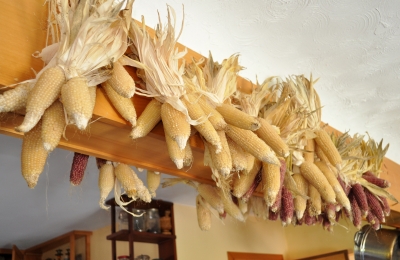
My popcorn spends winter, as ears, hanging from the kitchen rafters. I suspect the kernels are too dry because colder winter weather results in drier air indoors. Cold air holds less moisture than warm air so the colder the outdoor temperatures, the drier the air, once it is warmed.
The kernels need moisture, but not more than 13.5%. Fortunately, for us popcorn lovers, back in 1950 a Mr. Stephen Dexter of Lansing, Michigan came up with an easy way to get the moisture just right, as spelled out in U.S. patent number 2497399. And for those of us who want to start eating our home-grown popcorn early in the season, when kernels may be too moist, his method also sucks excess moisture out of the kernels to bring the level down to 13.5%. Watch out Orville!
Now for the method . . . to quote, “I have discovered that popcorn can be maintained at the best popping condition or restored to that condition by storing it in a closed container in which the atmosphere is maintained at approximately 75% 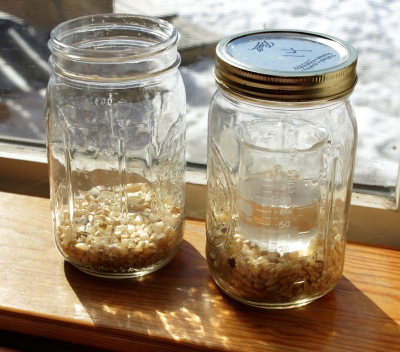 relative humidity. This relative humidity can be maintained throughout a wide range of temperatures by placing in the container a saturated solution of common table salt.” So the first step is to create a saturated solution of salt; I dissolved as much salt as possible (about 1.5 ounces) in a half a cup of water, and then added a little more to make sure that it was saturated.
relative humidity. This relative humidity can be maintained throughout a wide range of temperatures by placing in the container a saturated solution of common table salt.” So the first step is to create a saturated solution of salt; I dissolved as much salt as possible (about 1.5 ounces) in a half a cup of water, and then added a little more to make sure that it was saturated.
It’s important that the popcorn kernels don’t make contact with the salt solution. Mr Dexter maintained the right atmosphere by putting blotting paper soaked in the solution in a sealed container with the kernels. I put the kernels into a Mason jar and then set a beaker with the solution on top of the kernels.
A Little Science, A Lot Better Poppability
Not to doubt Mr. Dexter or the patent process, but the scientist in me had to test the method. A handful of shucked kernels went into each of two Mason jars. One jar was left open to the atmosphere. The other was sealed after I set the beaker of salt solution atop the kernels. Poppability tests came 3 days later. Pennsylvania Dutch Butter Flavored Popcorn, which normally pops pretty well, popped to 1/3 greater volume after the moisture treatment. Pink Pearl awaits testing.
At their best, neither would compare in volume increase with Orville Redenbacher’s popcorn, which claims a 44:1 increase. My popcorn costs nothing except my time (pleasantly spent) and is an organically grown, wholesome, whole grain that hangs decoratively from my kitchen rafter and tastes better. Let Orville have his fluff.
Editing my Chestnut Planting
On to another grain, chestnuts, called the “grain that grows on trees” because, unlike other nuts, it’s low in fat and protein but high in starch. My trees demand little more from me than daily harvest during their two-week ripening period. I have 4 trees but harvest all the nuts I need from one tree, aptly named Colossal for the truly colossal size of the nuts it yield.
Colossal, a hybrid of Castanea sativa (European chestnut) and C. crenata (Japanese chestnut), has its Achilles heel. Make that Achilles heels, plural. The first is that it is susceptible to the chestnut blight that decimated chestnut trees from
Maine to Georgia in the 20th century. Colossal is probably not quite as susceptible to blight as are American chestnuts; my trees, knock on (chestnut) wood, are 17 years old and have never had blight.
More serious is IKB, internal kernel breakdown, which turns the kernels dark and ruins their flavor. IKB occurs in a certain percentage of nuts of European x Japanese varieties when they are pollinated by a Chinese chestnut (C. mollissima) or hybrid. And vice versa. Most of my other trees are Chinese or Chinese hybrids.
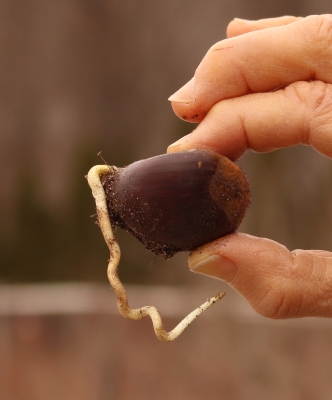 I was going to plant some of my Colossal nuts to make more suitable pollinators for Colossal but, as chestnut researcher Dr. Dennis Fulbright of MSU pointed out to me, those seedlings would have some Chinese “blood” in them. Too bad; I wintered the nuts in a baggie with moist potting soil in my unheated basement. Those nuts now believe that winter is over, and are already sprouting roots.
I was going to plant some of my Colossal nuts to make more suitable pollinators for Colossal but, as chestnut researcher Dr. Dennis Fulbright of MSU pointed out to me, those seedlings would have some Chinese “blood” in them. Too bad; I wintered the nuts in a baggie with moist potting soil in my unheated basement. Those nuts now believe that winter is over, and are already sprouting roots.
I’ll grit my teeth and put the chainsaw to my beautiful, large Chinese and Chinese hybrid chestnuts, and rely on my one, smaller Marigoule chestnut, a European x Japanese hybrid, to offer pollen to Colossal. Marigoule is blight susceptible, so I’m looking to plant another European x Japanese hybrid called Labor Day, which is blight resistant.
At any rate, coming on the heels of winter, it’s nice to see something growing, even if it’s nothing more than a 2 inch root sprout that pushed its way out of a chestnut. Oh, and outside, filbert branches are now draped with catkins, chains of male flowers. And fuzzy, gray catkins have puffed out (indoors, on branches in a vase) on contorted stems of fantail pussy willow. And an abundance of tender green seedling are sprouting in the greenhouse. Happy spring!

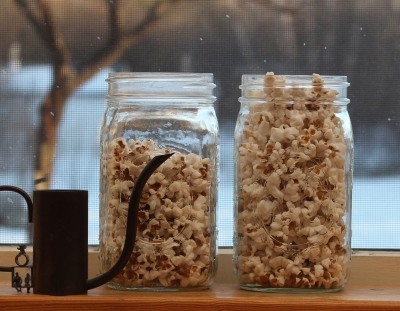
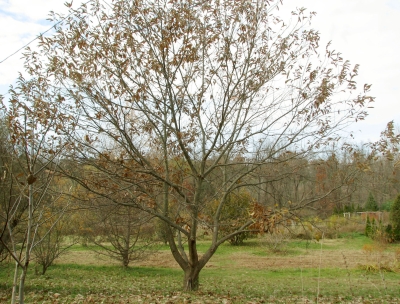
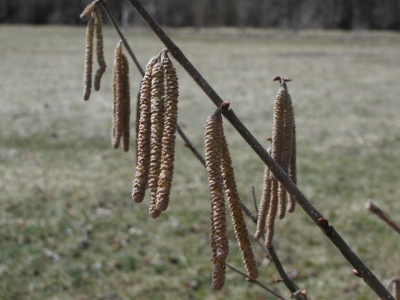


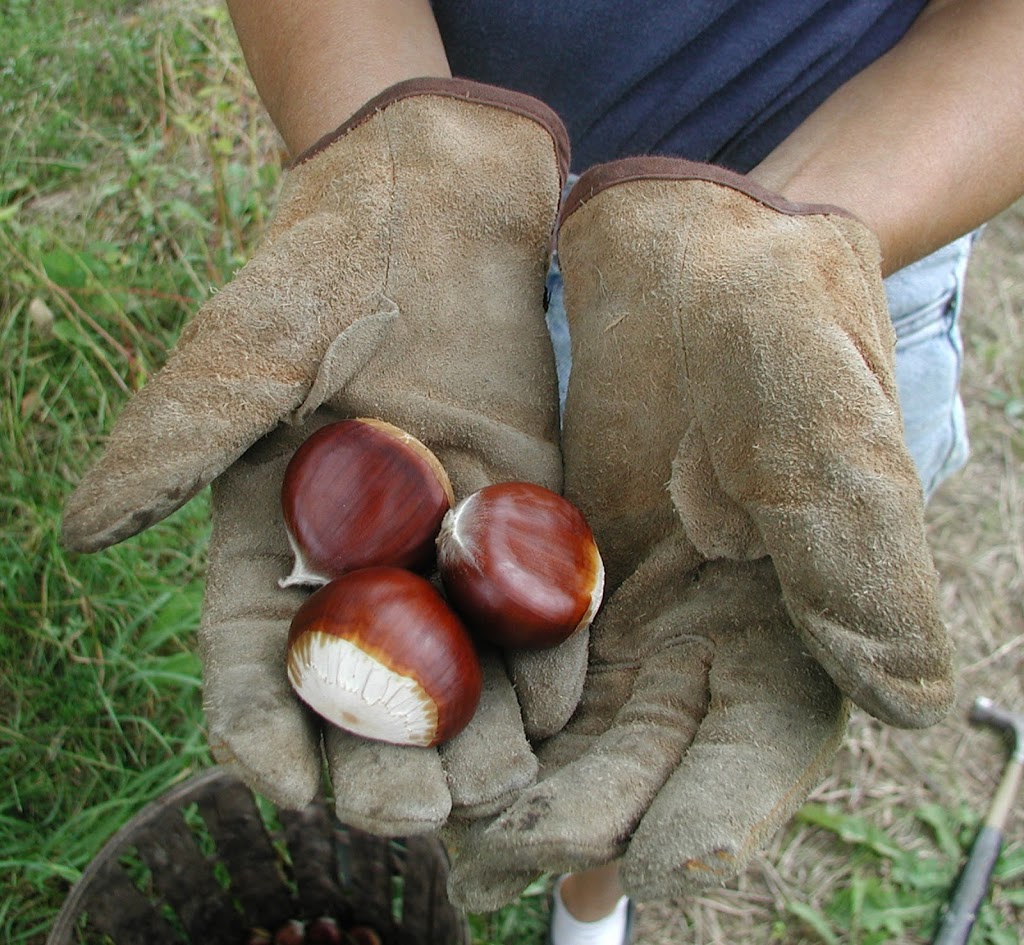

Leave a Reply
Want to join the discussion?Feel free to contribute!